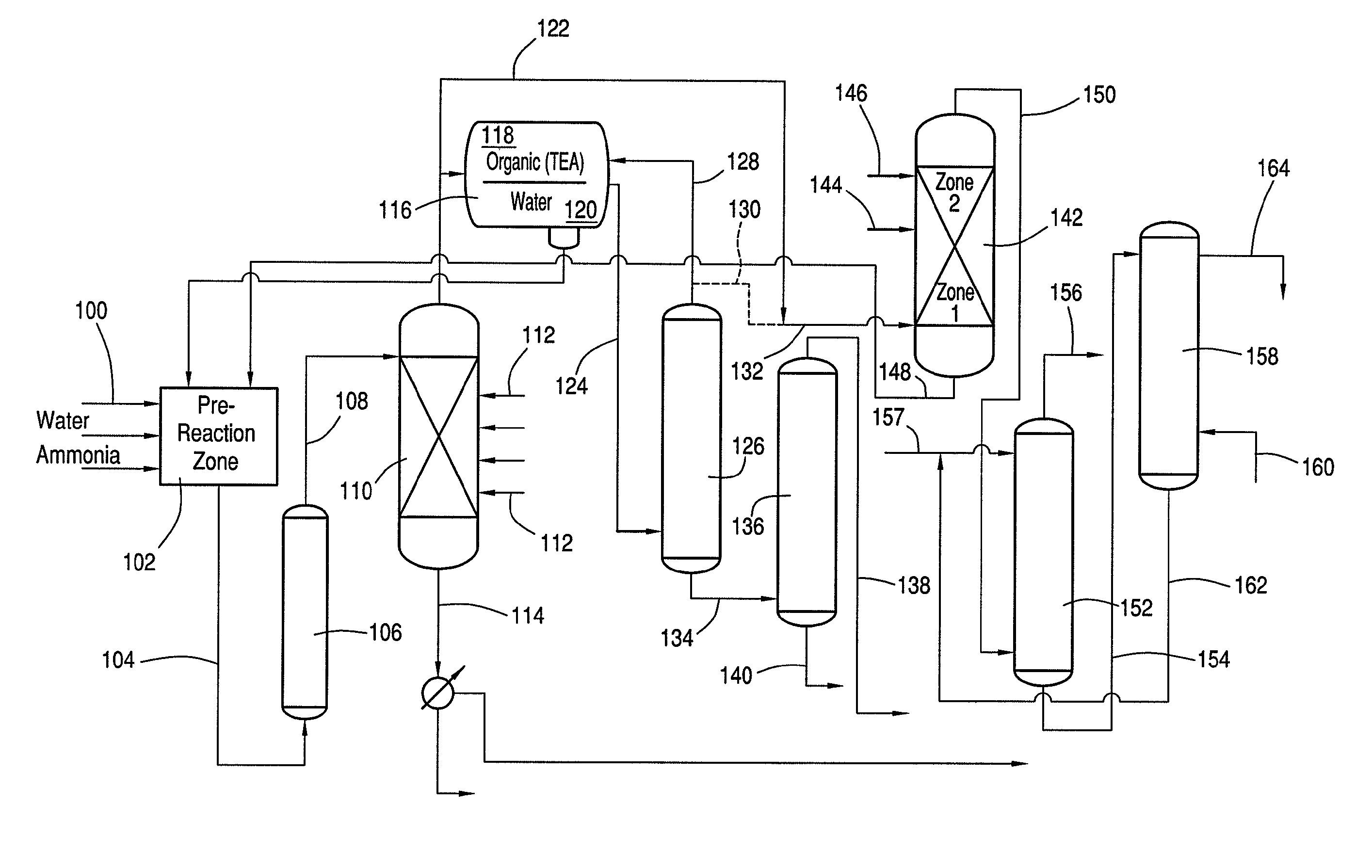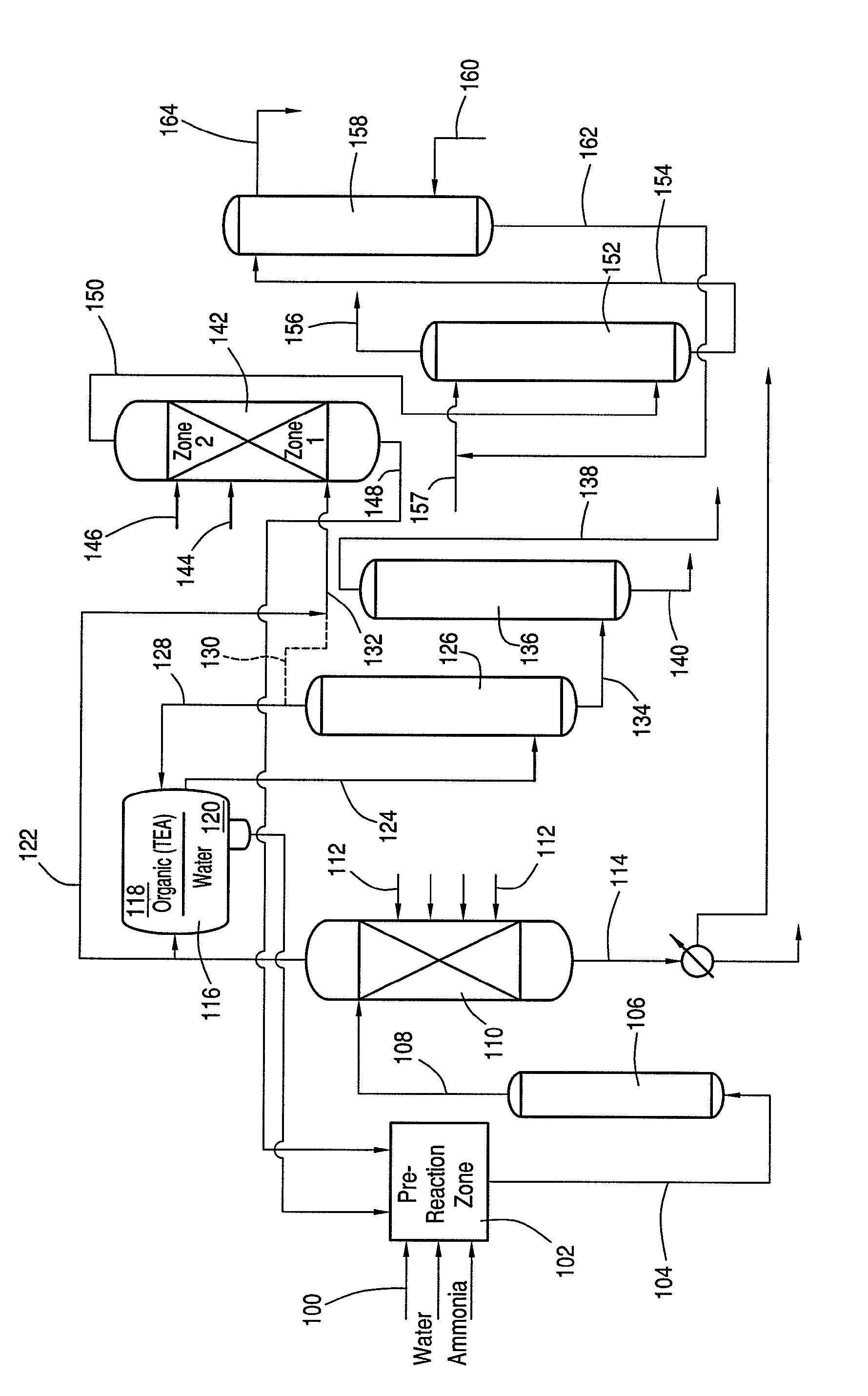Process for producing ammonium salts
a technology of ammonium salt and ammonium sulfate, which is applied in the direction of organic chemistry, dispersed particle separation, separation processes, etc., can solve the problems of high toc remaining in the ammonium sulfate, low yield of tertiary amines recovered by this process, and add to the separation cost, so as to reduce the amount of ammonia
- Summary
- Abstract
- Description
- Claims
- Application Information
AI Technical Summary
Benefits of technology
Problems solved by technology
Method used
Image
Examples
Embodiment Construction
Introduction
[0014]Conventional processes may treat process waste streams that comprise sulfuric acid, organic tertiary amines, and solvents, e.g., methylene dichloride, with ammonia 1) to separate the organic tertiary amines and 2) to produce ammonium sulfate, which is commercially valuable in the fertilizer industry. Typically, the solvent in the process stream remains from reactions that have taken place prior to formation of the process stream. In a preferred embodiment, the solvent is methylene dichloride, which remains in the process stream from an acesulfame-K production process. These conventional processes, however, yield high amounts of unreacted ammonia. This unreacted ammonia typically has detrimental effects on the ability to further separate the components of the treated stream. As one example, the unreacted ammonia adversely affects the distillation of impurities from the methylene dichloride solvent due to the similar boiling points of ammonia and methylene dichloride...
PUM
| Property | Measurement | Unit |
|---|---|---|
| compressive strength | aaaaa | aaaaa |
| partial pressure | aaaaa | aaaaa |
| pressure | aaaaa | aaaaa |
Abstract
Description
Claims
Application Information
 Login to View More
Login to View More - R&D
- Intellectual Property
- Life Sciences
- Materials
- Tech Scout
- Unparalleled Data Quality
- Higher Quality Content
- 60% Fewer Hallucinations
Browse by: Latest US Patents, China's latest patents, Technical Efficacy Thesaurus, Application Domain, Technology Topic, Popular Technical Reports.
© 2025 PatSnap. All rights reserved.Legal|Privacy policy|Modern Slavery Act Transparency Statement|Sitemap|About US| Contact US: help@patsnap.com


